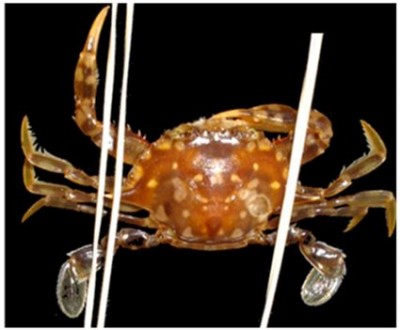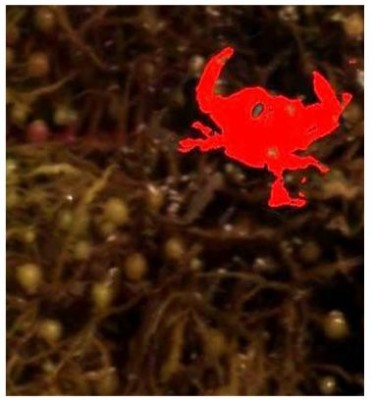Some of the most sophisticated examples of camouflage occur in earth’s ocean, where precise regulation of spectral and polarized reflectivity is achieved through mechanims that are only now becoming known. With collaborators, our lab uses hyperspectral imaging to investigate these processes further.
This research is primarily funded through the Office of Naval Research Multi-University Intiative (MURI) and includes colleagues from Univ. Texas, Texas A&M, City College of New York, Univ. Rhode Island and Stanford University.
The crab Portunus sayi has a yellow/brown, mottled appearance which appears to the human eye to blend into its Sargassum habitat. Experiments involving hyperspectral imaging of adults show varied pattern and shading that changes in color in response to their background.
Reflection of light from the seafloor or benthos contributes to how organisms, particularly those living near the seafloor, can camouflage dynamically. We make hyperspectral measurements of benthic reflectance over various habitats for use in models of these habitats.
Another aspect of camouflage involves how organisms use polarized light underwater. Collaborative research has furthered the understanding of polarization properties in the water column and how organisms respond to such signals (e.g., You et al. 2011).
This research is primarily funded through the Office of Naval Research Multi-University Intiative (MURI) and includes colleagues from Univ. Texas, Texas A&M, City College of New York, Univ. Rhode Island and Stanford University.

